Church of Christ Pantokrator in the Ancient Town of Nessebar – an emblem of a lost world
- Stefan Ivanov

- 2 days ago
- 8 min read
The Church of Christ Pantokrator in Nessebar represents one of the most significant testimonies to the flourishing of medieval Bulgarian and Byzantine architecture.
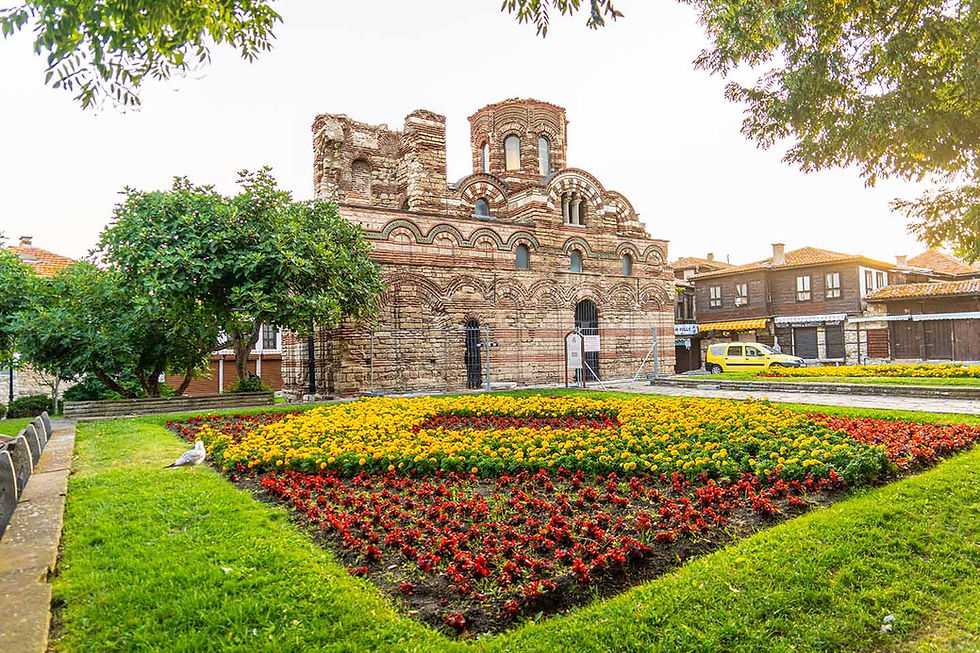
Located in the heart of the Old Town, this temple is not just a tourist attraction, but a site of exceptional cultural and scientific significance.
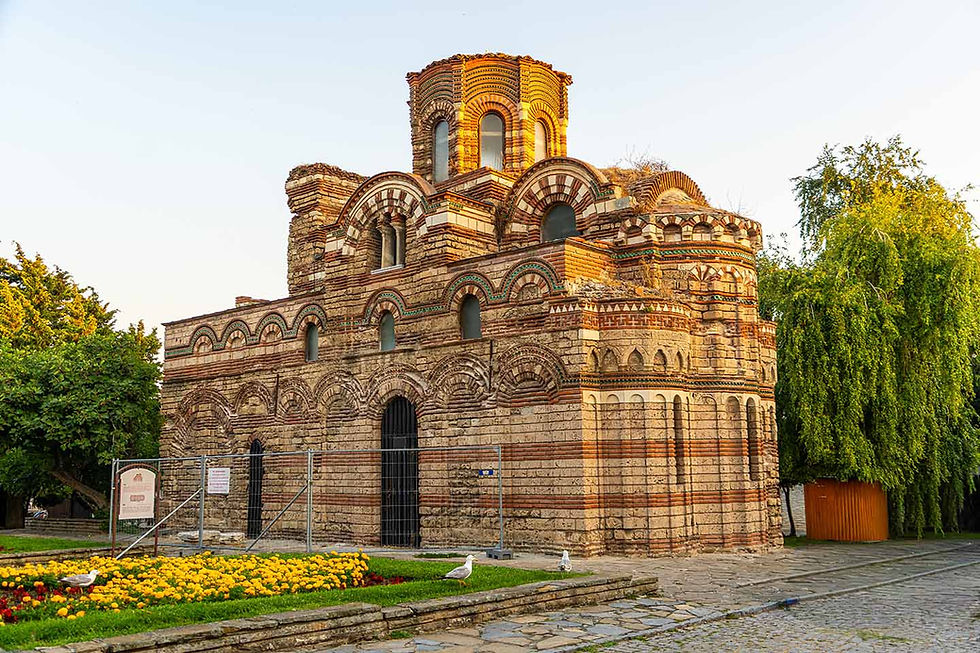
Its exceptional preservation distinguishes it from most other medieval monuments in Bulgaria and establishes it as a benchmark for construction from this period.

The temple as a testament to the flourishing of the Second Bulgarian Kingdom
The construction of the Church of Christ Pantocrator is closely linked to one of the most turbulent and at the same time fruitful periods in the history of Nessebar. The periodization of the construction is the subject of different opinions, but the consensus among scholars refers it to the end of the 13th or the beginning of the 14th century. More specific hypotheses, supported by researchers such as Robert G. Ousterhout, place the construction in the middle of the 14th century. Some sources attribute its construction to the reign of Tsar Ivan Alexander (1331 - 1371), which coincides with a period of particular cultural and economic prosperity for the city.

The political background during this period was dynamic. Nessebar, known in antiquity as Messembria, often passed from Bulgarian to Byzantine control. First included in the borders of the Bulgarian state by Khan Krum in 812, the city was regained again during the reign of Tsar Simeon the Great and experienced a real flourishing under Tsar Ivan Alexander. It was in this context of political stabilization and economic prosperity that a remarkable construction boom was observed. The presence of numerous new churches built at the same time, such as "Christ Pantocrator" and "Saint John Aliturgetos", is not accidental. It is a direct reflection of the state power and spiritual rise of the Second Bulgarian Kingdom. Thus, the church is not just a monument, but material evidence of one of the golden ages of medieval Nessebar, which makes it a valuable historical source for the overall understanding of the era.

The name of the church "Christ Pantocrator", which in Greek means "Christ the Almighty", has a deep theological meaning. It represents our Lord Jesus Christ as the Ruler of all and Lord of the Universe, which deeply emphasizes his divine sovereignty and omnipotence.
An embodiment of the picturesque style
The church of "Christ Pantocrator" is a recognized example of the so-called picturesque style in medieval church architecture, which is distinguished by a richly decorated exterior and skillful use of building materials. It was designed in the late Byzantine style, with the main construction technique, known as opus mixtum (mixed masonry), involving the alternation of courses of cut stone and red brick. This not only ensures the strength of the structure, but also creates a characteristic colorful and richly textured facade that is visually attractive and distinctive.

The building's plan is rectangular, with dimensions varying slightly in different sources – from 16 meters by 6.70 meters.

The temple has two entrances – from the west and the south, and ends in the east with three small, richly profiled apses. The internal structure includes a narthex, under the floor of which is built a medieval tomb. Although they are now destroyed, in the middle of the nave there once stood four slender columns supporting the dome.

The vertical composition of the church is also impressive. The central structure is crowned by a dome, the richly decorated drum of which is equipped with eight arched windows, providing access to light in the interior. Its distinctive element is also the partially destroyed but integrated bell tower rising above the narthex. Access to it is via a brick staircase from the south. This architectural feature was characteristic of contemporary Byzantine church architecture.
Decoration and symbolism – the exterior as a narrative
The most famous feature of "Christ Pantocrator" is its lavish and colorful exterior decoration, which transforms the facades into a true work of art.

The eastern side with the apses is the most richly decorated part, but all the facades display unique ornamentation. The decoration is achieved by precisely alternating rows of bricks and cut stones, creating optical patterns.

Among the numerous decorative elements, the following stand out:
A belt of tall, double-recessed arches that run the entire length of the facade
Above the arches is a characteristic decoration of ceramic bowls and quatrefoils in three rows, which give the building a picturesque variety
The facade is further enriched with floral motifs, triangular ornaments and brick friezes.
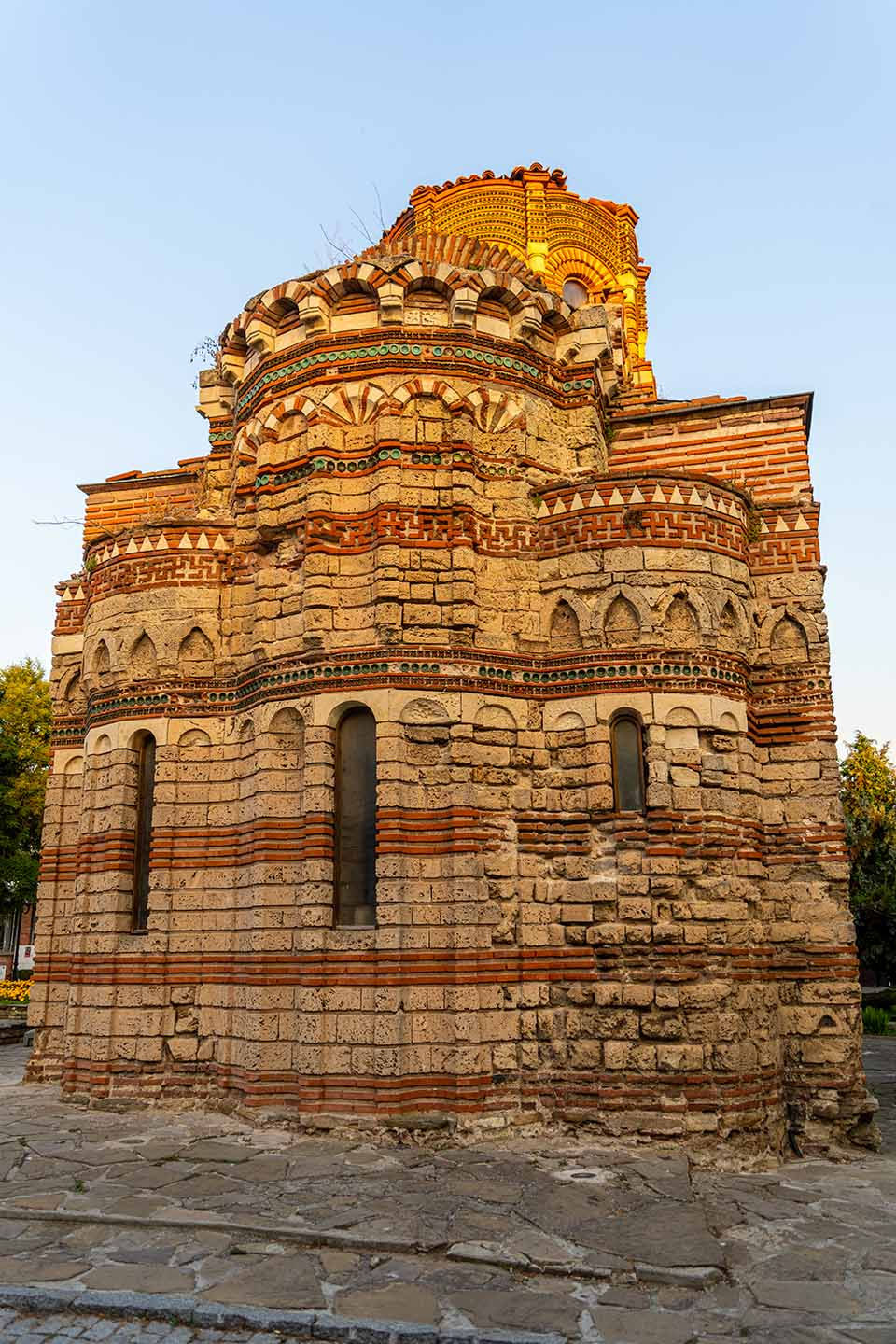
One of the most curious elements in the decoration is the frieze of swastikas, filled with bricks, which runs over the eastern apses. For the modern observer, this symbol has extremely negative connotations associated with 20th-century history. However, expert analysis reveals its ancient and entirely different meaning. In the Middle Ages, the swastika was a widely used symbol associated with solar cult, prosperity, luck and God's protection. Its presence in a Christian temple demonstrates a remarkable cultural syncretism - a process of peaceful integration of ancient, even pagan, symbols into the new religious context. This shows that medieval artists and architects were more flexible and adaptable in their art, and the symbols were reinterpreted and enriched with new meaning.

Despite its lavish exterior, only fragments and traces of the original interior frescoes have survived. This contrast suggests that the main emphasis of the creators of the temple was on the external representativeness and the rich facade decoration.
Cultural and historical significance
The Church of Christ Pantocrator occupies a central place in the cultural heritage of Nessebar, which is the only historical town in Bulgaria included in the UNESCO World Heritage List since 1983.г.
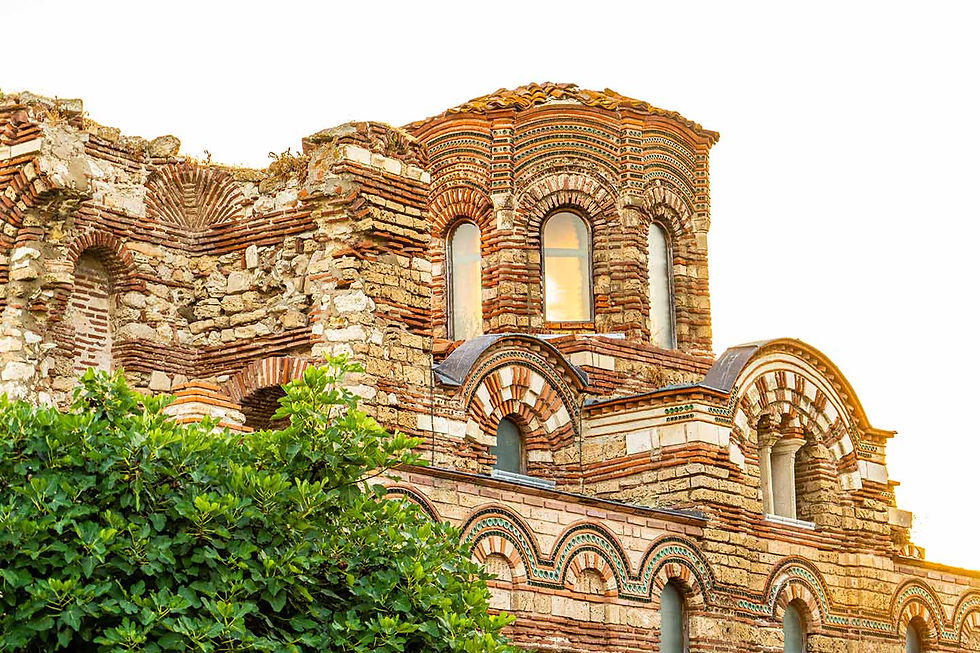
The church is part of the protected area of the Old Town and has been recognized as a national monument since 1927, and in 1964 it was declared a cultural monument of national importance.

Currently, the temple does not function as an active church, but has been converted into an art gallery. Various exhibitions are organized there, one of the examples being a photographic exhibition entitled "Nessebar and the Bay on Old Maps".

To fully appreciate the uniqueness of "Christ Pantokrator", it is useful to make a comparison with other significant medieval churches in Nessebar.

The comparative review clearly shows that while other churches such as "Agios Ioannis Aliturgetos" have been severely damaged by natural disasters and have undergone significant reconstructions, and "Agios Stefanos" has been expanded and even changed its name, "Christ Pantokrator" has survived largely intact.

This exceptional degree of preservation makes it incomparably more valuable to researchers, as it allows the study of original architectural and decorative principles without significant distortions. Its integrity is a direct reason for its central place in the study of medieval art in Bulgaria.
Emblem of a lost world
The Church of Christ Pantocrator is more than an architectural monument; it is a synthesis of culture, history and art. Its exquisite architecture in the picturesque style, demonstrating the opus mixtum technique, and its lavish external decoration, enriched with symbols such as a frieze with swastikas, make it a unique example of medieval construction. The temple serves as an eloquent testimony to the political and economic prosperity of Nessebar during the Second Bulgarian Kingdom, with every brick and stone telling the story of a lost but not forgotten world.

Its exceptional preservation compared to other temples from the same period establishes it as a key research site and one of the most important cultural values in all of Bulgaria.

Functioning today as an art gallery, the church continues to serve as a bridge between the past and the present, allowing visitors to experience the grandeur of medieval art and appreciate its place in the world cultural heritage.
In 1927, the Church of Christ Pantokrator was declared a national antique.
In 1964, the Church of Christ Pantokrator was declared an architectural and construction monument of culture with the category of national importance.
Nessebar - a journey through time, embraced by the sea and whispering stories
Sometimes we need to stop for a moment, leave the hectic everyday life behind us and immerse ourselves in an atmosphere where time has stopped.

Ancient Nessebar is just such a place.

Situated on a small, rocky peninsula, connected to the mainland by a narrow strip of land, this city is like a treasure trove, protected by the waves of the Black Sea.

Nessebar is located:
412 kilometers (about 3 hours and 59 minutes by car) from the capital
277 kilometers (about 2 hours and 55 minutes by car) from the city of Plovdiv
100 kilometers (about 1 hour and 48 minutes by car) from the city of Varna
35 kilometers (about 36 minutes by car) from the city of Burgas
The ancient town of Nessebar is a living museum. Here, antiquity, every ruin, every paved street and every ancient house carry the spirit of bygone eras.

As soon as you pass the old mill, you will be greeted by a labyrinth of cobblestone streets that wind between old houses with characteristic wooden facades and flower gardens.

The air is filled with the scent of the sea and history.

Don't miss the over 40 churches that whisper stories of the greatness of Byzantium, and feel how history intertwines with the sea. Some of them are ruins, others are perfectly preserved, but all of them are witnesses to the greatness of the Byzantine Empire and the Middle Ages.

But Nessebar is not just a museum. It is a living city that breathes in unison with the sea. Allow yourself to get lost in the narrow streets, browse the small shops with handmade souvenirs and sit in a cozy restaurant with a view of the sea.

In the evening, when the sun sinks into the sea waters and the city lights reflect on the calm surface, Nessebar becomes a magical place that will leave a lasting impression in your heart.

Come and feel the magic of time in Ancient Nessebar!

Surrender to the charm of the wooden houses perched above the cliffs and let the wind tell you about the ancient seafarers.

In the evening, when the sun reflects in the sea, Nessebar turns into a magical place.

Visit Old Nessebar and touch eternity - here time simply stops.
How to get to the Church of Christ Pantokrator?
The Church of Christ Pantokrator is located in the central part of the Old Town of Nessebar.
I advise you to leave your car in the large northern municipal parking lot (a parking fee is required). You climb some of the numerous steps leading to "Kraibrezhna" street and along one of the numerous narrow cobblestone streets you head to the central part of the Old Town of Nessebar.
You are reading an ad-free blog - completely focused on the content!
I remind you that you can read all my posts here - in "Photo Moments", without being interrupted by a single annoying ad, because "Photo Moments" is a place without ads!
I made the important decision to make "Photo Moments" ad-free so that my site can load much faster, the content I present to you can be as clean as possible and your experience in "Photo Moments" can be the best possible!
If you appreciate everything I do, you can support me HERE or by following the gold star below.
Thank you!
And finally, my dear friends,
you shouldn't miss checking out
the special photo album with moments –
discovered, experienced, filmed and shared with you!


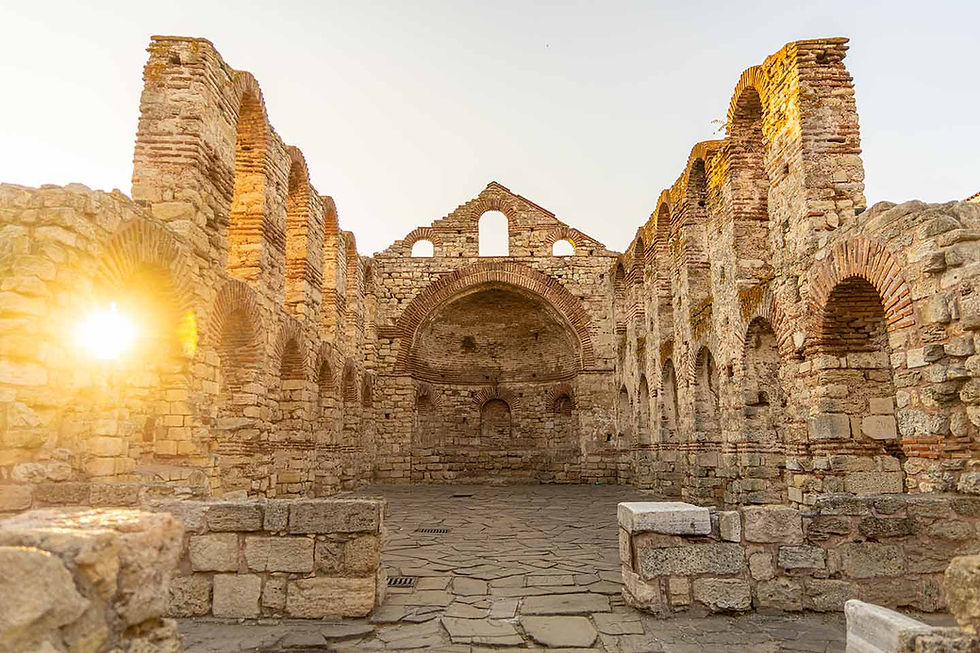
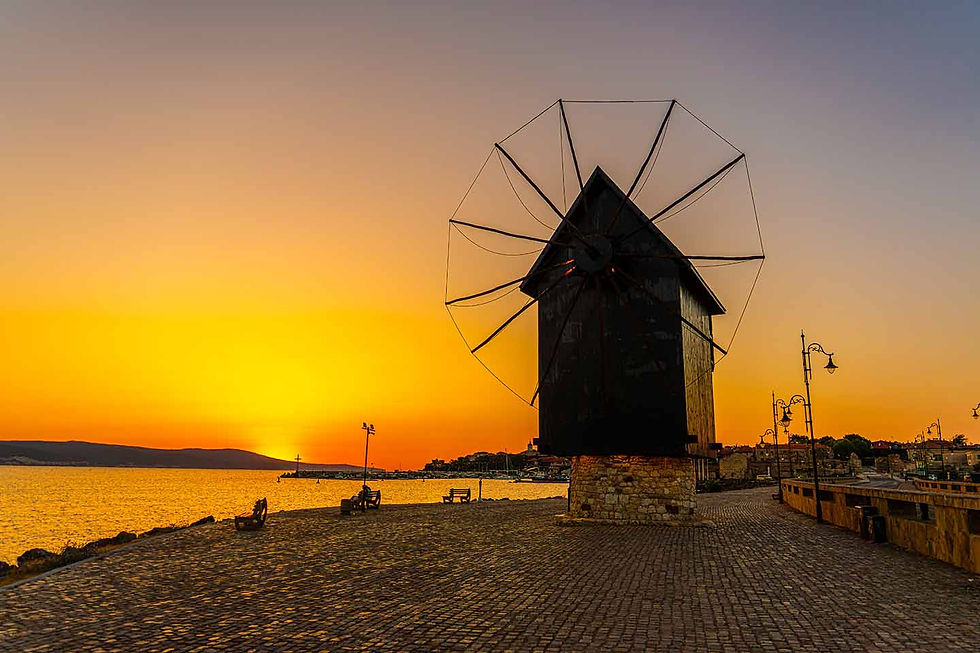
Comments